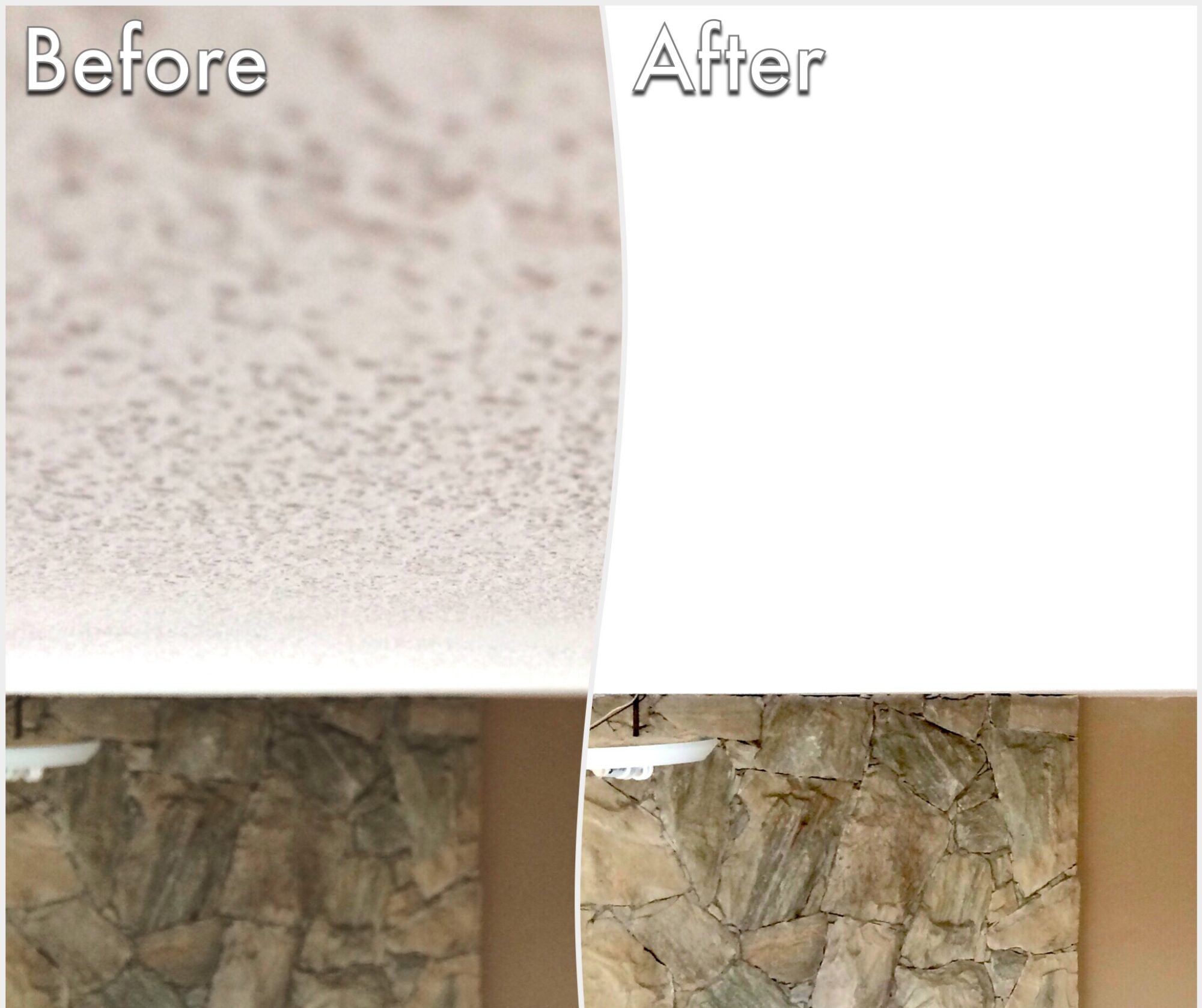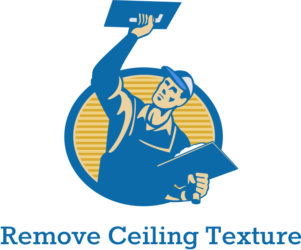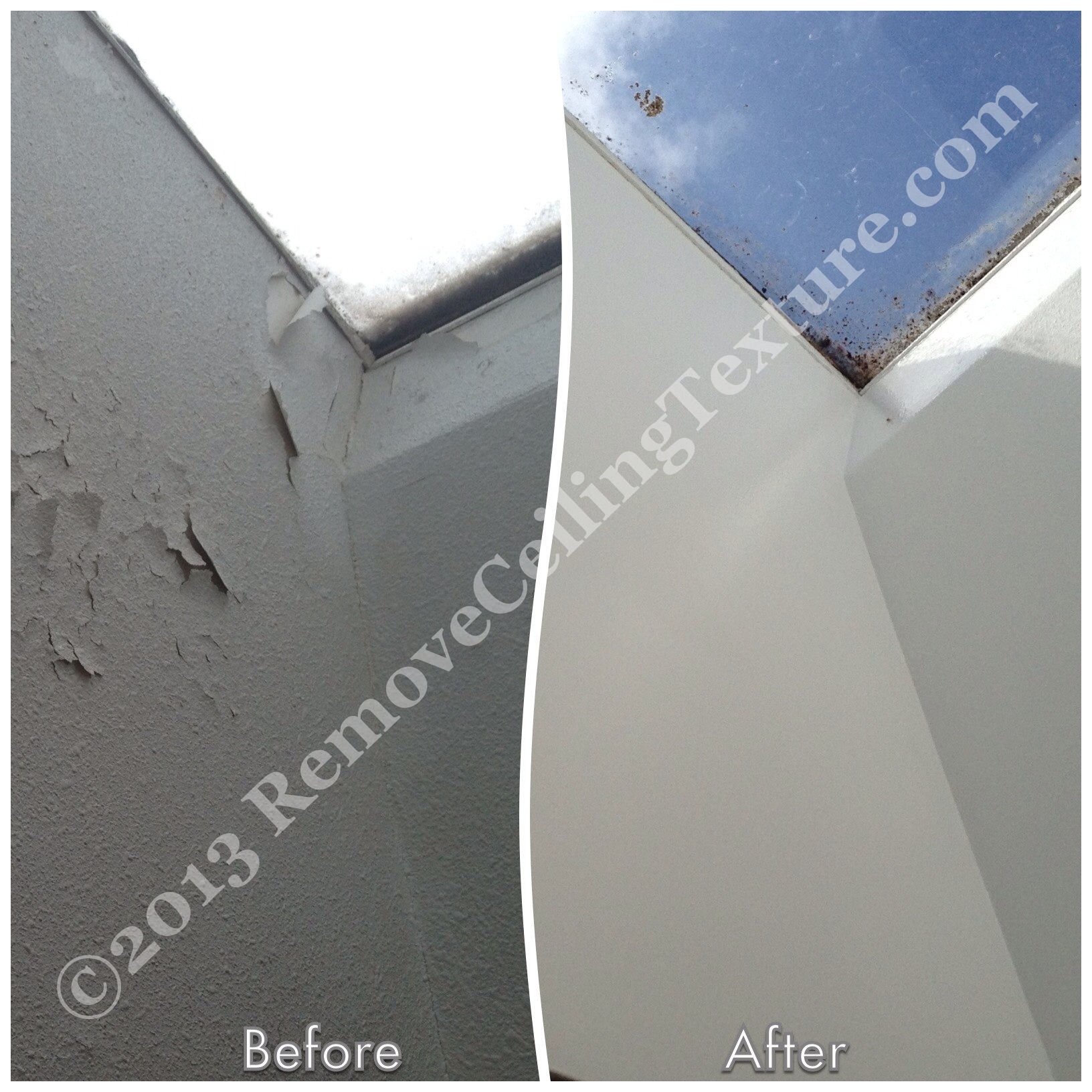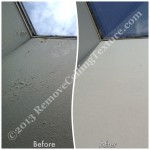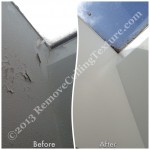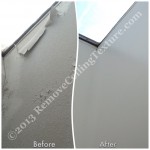The focus of this article is moldy, cracking and peeling skylights. However before we get into that let’s make one thing clear. If you have a faulty skylight that is leaking into your house, you should replace it. Now that we have that out of the way, let’s address why I’m writing this article.
Skylights are exposed to more moisture
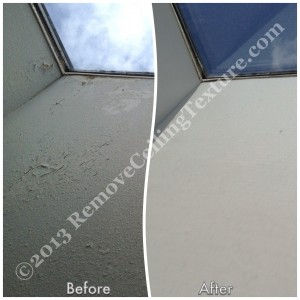
Skylights are almost never installed at the same height as your ceilings. Skylights are usually installed on your roof and there’s usually a hole, 3 to 5 feet in your ceiling that leads to the skylight. This difference in height provides a perfect opportunity for moisture to rise up and get stuck in your skylight with nowhere to go. The moisture then gets absorbed by the popcorn texture, paint and drywall and starts the process of creating mold and mildew. Moldy skylights start cracking and peeling off. They create an eyesore as well as a health hazard.
Skylights are exposed to massive temperature changes
The hole leading up to your skylight gets extremely hot on a summer day. Far hotter than anywhere else in your home. This again is due to the heat not having anywhere to go, so it keeps accumulating in that one spot. This causes the popcorn texture, paint and the drywall to expand beyond their designed limits.
By the same token the space below your skylight gets cooler than anywhere else in your home during the night and in the winter. This causes the popcorn texture, paint and drywall around the skylight hole to shrink beyond their designed limits.
The heating and cooling cycles are repeated 365 days a year and slowly start breaking down the drywall as well as start peeling off the texture and paint that are sprayed inside the skylight.
Popcorn & other ceiling textures were never meant for inside a skylight
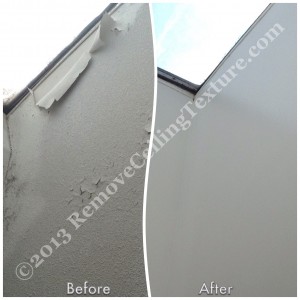
Custom homes that were built over the past 40 years in the Metro Vancouver area, usually do not have texture sprayed inside their skylights. If your skylights are sprayed with popcorn texture or any other ceiling texture, it indicates that the builder was trying to cut corners.
Manufacturers of ceiling texture materials specifically instruct not to spray their product on the inside of skylights. The reason against spraying any type of texture inside a skylight is simple. Ceiling texture, including popcorn texture, provides much more surface area for mold and mildew to grow on. Therefore it’s a terrible idea to spray ceiling texture on the inside of a skylight.
Moldy skylights pose a health hazard
Your skylights are very much like any other component of your home. In that once mold and mildew start growing on or below the surface, they pose a serious health hazard to you and your family. We have talked about Asthma and other allergies caused or exacerbated by dust and allergens trapped in textured ceiling surfaces on this website before.
So to conclude, a skylight that is displaying signs of mold and mildew, or starting to crack and peel, is at best an eyesore that needs to be dealt with and at worst a serious hazard to you and your family’s health. It’s necessary to consult a professional and remedy the situation.
Click on thumbnail to enlarge
